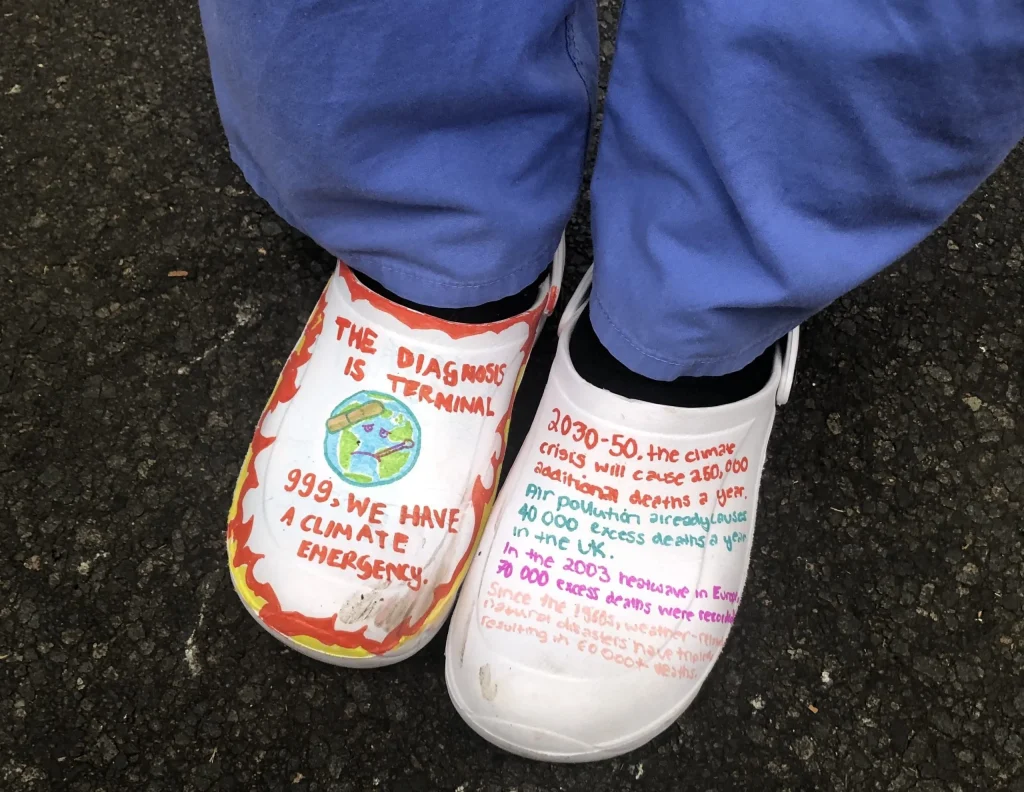Crocs targeted: Why some schools are banning the popular shoe.
Since Crocs were first introduced in 2002, their unique look and style have sparked debates. However, a growing number of schools have now banned the popular shoe, citing safety concerns.
At Bessemer City High School in Alabama, Principal Stoney Pritchett has made it clear that Crocs are not allowed. “It’s actually a safety hazard,” he explained. “Man, they can twist the knees, twist the ankles, things like that.” Students caught wearing Crocs at this school may face in-school suspension.
This anti-Crocs movement is spreading. Schools in at least 20 states are now explicitly banning Crocs as part of their dress codes.
In a segment on TODAY, Brian Cheung spoke with students who defied the ban by wearing Crocs, only to face consequences. These students argued that their Crocs were just as safe as any other shoe. However, podiatrist Dr. Priya Parthasarathy disagreed, pointing out the potential dangers. "Crocs can easily get caught in equipment, causing the child to fall or injure their foot or rip a toenail off. Things I see in the office on a daily basis,” she said.
Dr. Parthasarathy acknowledged that Crocs can have a place in everyday life, especially for certain activities. “Even though you probably shouldn't run in them, they can be easily worn in moderation and even make a great recovery shoe after workouts,” she added.
In response to the bans, a spokesperson for Crocs stated that while they find the bans “unfortunate,” sales have not been impacted. They further clarified, "Classic Clog is a comfortable, casual shoe that is appropriate for everyday wear. We are not, nor do we market ourselves as, a specialty or performance brand."
Despite the pushback, Principal Pritchett is firm in his stance on the issue. "It’s a safety hazard," he reiterated. "I mean, things happen."
The Evolution and Popularity of Crocs: A Fashion Staple or a Safety Concern?
Crocs, the foam clogs that took the world by storm in the early 2000s, have become a cultural phenomenon. Initially introduced in 2002, Crocs were designed as a casual, comfortable, and waterproof shoe, perfect for outdoor activities like boating, gardening, or just strolling through the summer heat. Over the years, however, the brightly colored clogs have transcended their practical roots, turning into a fashionable item embraced by people of all ages.
The Rise of Crocs
Crocs were first designed by Scott Seamans, Lyndon "Duke" Hanson, and George Boedecker, who saw a niche in the footwear market for a durable, non-slip shoe. Made from Croslite, a proprietary foam material, the shoes are lightweight, flexible, and provide significant comfort. They were initially marketed as boating footwear but quickly expanded into a mainstream fashion item. By 2006, they were available in a range of colors and styles, with even more customization options through Jibbitz charms that could be inserted into the shoe’s ventilation holes.
By the late 2000s, Crocs had found a place in everyday life. Celebrities, athletes, and influencers began to wear them, elevating the status of the previously overlooked shoes. Despite initial criticism of their aesthetic appeal, Crocs became beloved for their comfort, durability, and practicality. Their popularity surged even further during the COVID-19 pandemic, when many people began prioritizing comfort while working from home.
Crocs' Global Success
Today, Crocs has sold over 700 million pairs of shoes worldwide, making them one of the most iconic footwear brands. They are available in over 90 countries and are worn by people from all walks of life. The brand continues to expand, with global sales seeing steady growth year after year. In fact, 2021 marked a milestone year for Crocs, with the company reporting over $2 billion in revenue, a record high for the brand. Crocs has also developed a variety of styles, expanding beyond their classic clogs to include sandals, boots, and even high-fashion collaborations, making them a mainstay in both the casual wear and luxury markets.
The shoes are made from Croslite, a patented resin material that gives Crocs their unique combination of lightness, cushioning, and durability. Croslite is both water-resistant and easy to clean, adding to the shoe's versatility. The material is also what has made the shoe so beloved for comfort, as it molds to the foot over time.
Celebrity Endorsement and Collaborations
What began as a humble, practical shoe has turned into a global style statement, with a wide range of celebrities wearing Crocs. Stars like Post Malone, Justin Bieber, and even former First Lady Michelle Obama have sported Crocs, helping boost the brand’s street cred. In fact, Post Malone’s collaboration with Crocs in 2018 led to the release of limited-edition pairs that sold out in minutes, further cementing the shoe's status as a fashion item. Other notable collaborations include partnerships with high-fashion brands like Balenciaga and designer Christopher Kane, showing that Crocs have evolved into a mainstream luxury item as well.
Cost and Environmental Impact
In terms of cost, Crocs are relatively affordable. Prices typically range from $30 to $60 for the classic clog styles, with higher-end collaborations or limited-edition releases priced significantly higher. For example, designer Crocs or special edition shoes can cost upwards of $100 or more, depending on the collaboration and style.
As for sustainability, Crocs has made strides in addressing environmental concerns. In recent years, the company has committed to becoming a more eco-conscious brand. In 2020, they announced a plan to make all of their shoes 100% recyclable by 2030, and they’ve begun incorporating more sustainable materials into their production process. While the company has not completely eliminated plastic, it has worked on reducing its carbon footprint and is actively seeking to create more environmentally friendly products.
Although the debate about the safety of Crocs in schools continues to gain traction, some experts believe that the issue is overblown. Dr. Priya Parthasarathy, a podiatrist, notes that while Crocs are not ideal for running or engaging in high-impact activities, they are fine for light, moderate use, especially in recovery settings or casual wear. She even mentioned that Crocs can make a great post-workout shoe.
The Response from Crocs
In response to the growing number of school bans, Crocs has maintained that their shoes are designed for comfort and everyday wear. A spokesperson for the brand expressed disappointment over the bans but also noted that their sales have remained unaffected. “Classic Clog is a comfortable, casual shoe that is appropriate for everyday wear. We are not, nor do we market ourselves as, a specialty or performance brand,” they said.
Despite the bans in some schools, the overall demand for Crocs remains high. The brand’s ability to maintain a foothold in both the fashion world and the comfort shoe market speaks volumes about its cultural impact. With collaborations from high-end designers, celebrity endorsements, and a growing roster of colors and styles, Crocs have shown that they’re not just a passing trend.
In the world of footwear, few brands have had as lasting an impact as Crocs. What began as a practical shoe for outdoor activities has evolved into a cultural statement, loved by some and criticized by others. Whether praised for their comfort and versatility or banned for their potential safety hazards, Crocs continue to occupy a unique space in the global footwear market. Whether you love them or loathe them, it’s clear that Crocs aren’t going anywhere anytime soon.


















